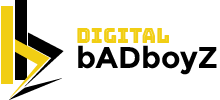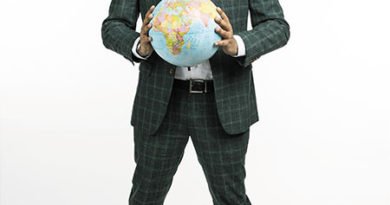How to get the RIGHT traffic to your website using Customer Awareness Levels?
|
You can listen to the article here.
|
How to get the RIGHT traffic to your website using Customer Awareness Levels?
A few weeks back, I analyzed the home pages of fast-growing startups in their early stages and demonstrated how they had to make some drastic changes to enable the growth that they are enjoying now.
Whilst every company is different, many are making the same mistakes in the early stages of their development — they aren’t paying any attention to their prospects and their level of product awareness while trying to make an online sale.
Many of them have a single landing page as their home page and they try to address everyone with that page.
On the other hand, successful brands (with billion-plus valuations) gradually update their home pages to adjust to these primary stages of awareness while maintaining other landing pages for users with specific needs.
In this post, I’ve explained with plenty of examples how these companies use these stages of awareness to sell more products and how you can do it too.
When we think about the customer journey, on one end of the spectrum lives your market, and on the opposite end, you’ll find your product. That space in between contains many intricate and important steps that need to be considered to make a sale.
Your market consists of potential customers with a need or desire, and different customers have a different level of awareness about the products available to solve their needs or desires.
Schwartz, a legendary copywriter, and marketer who is still considered one of the pioneers in marketing, explained in his book “Breakthrough Advertising” about these different phases of awareness.
- Completely Unaware: Prospects have a problem that they don’t fully realize and hence they are not looking for a solution.
- Problem-Aware: Your prospect knows they have a problem and they recognize the problem immediately when told about it. But they can’t connect your product with the fulfillment of that problem.
- Solution-Aware: Your prospect knows or recognizes immediately the solution but they are not aware that your product offers that solution
- Product-Aware: Your prospect knows about the product but isn’t completely aware of what your product does, or how well it solves their problem
- The Most Aware: Your prospect knows your product and wants to buy it. He/she is waiting for the right bargain or timing.
Each phase of awareness requires a different framework and approach to move your potential customer from being completely unaware to the point of purchasing your product.
Here are some examples from successful companies to demonstrate how they approached their prospects at each of these phases of awareness.
Example 1: Stripe
Stripe was targeting solution aware customers. Developers knew about accepting online payments but they weren’t aware that Stripe can offer that solution to their satisfaction.
On the other hand, Stripe knew exactly what problem they were solving and for whom. Their headline and sub-heading had immense clarity.

Headline– Payments for developers- talks about the solution. It reminds people about the solution before introducing the product so that they can easily relate to it.
Sub-heading introduces the product and elaborates on that solution and at the same time differentiates from other solutions (like Paypal) by saying you can now accept credit cards.
Stripe home page graduated to Product Aware stage by this time. People visiting their home page were aware of Stripe but they needed to be told how Stripe could solve their problem.
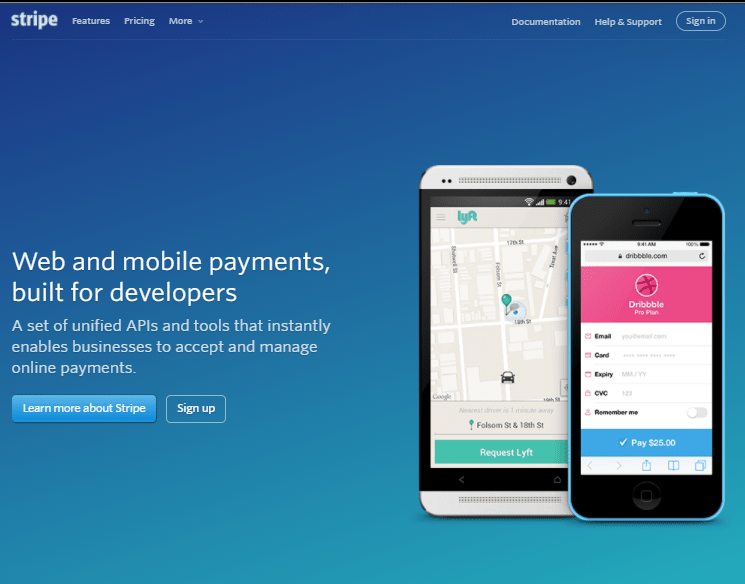
Stripe is now quite verbose in the headline and sub-heading throwing a lot of information at the visitor knowing that their visitors want more details.
Product Aware customers need more information in order to make a decision. They already know about the solution. The changes in the copy are clearly addressing a Product Aware audience:
- Headline talks about both Web and mobile
- Sub-heading talks about unified APIs and tools
- Instead of just developers, it addresses businesses- by this time businesses also know that they can accept payments from cards
In 2015, their audience was not just developers but also businesses as the awareness grew about accepting payments through cards. Since it was targeting a Product Aware audience in 2015, look how their CTA changed from:
“Get started with Stripe” in 2011 vs “Learn more about Stripe” in 2015.
The call to action “Get started with Stripe” was for people who needed a payment solution.
Call to action “Learn more about Stripe” was for an audience who were specifically looking for Stripe’s solution.
Basically, they are trying to provide more information about Stripe at every stage instead of just talking about the solution (taking payments through cards) as most customers are already aware of the solution by the time they are visiting Stripe’s home page.
By now, Stripe is targeting the Most Aware prospects.
Stripe is neither talking specifically about the solution nor the product features on its home page.
It’s hinting about just one thing- timing.
As I mentioned before, Most Aware customers are waiting for the right bargain or timing for using/purchasing a product. In Stripe’s case, timing is important because many businesses might think they are too small or too big to use Stripe.
That’s exactly the concern they are addressing in their copy- “Millions of companies of all sizes..”
Their primary message is- no matter how big or how small you are, you can use Stripe for payments.
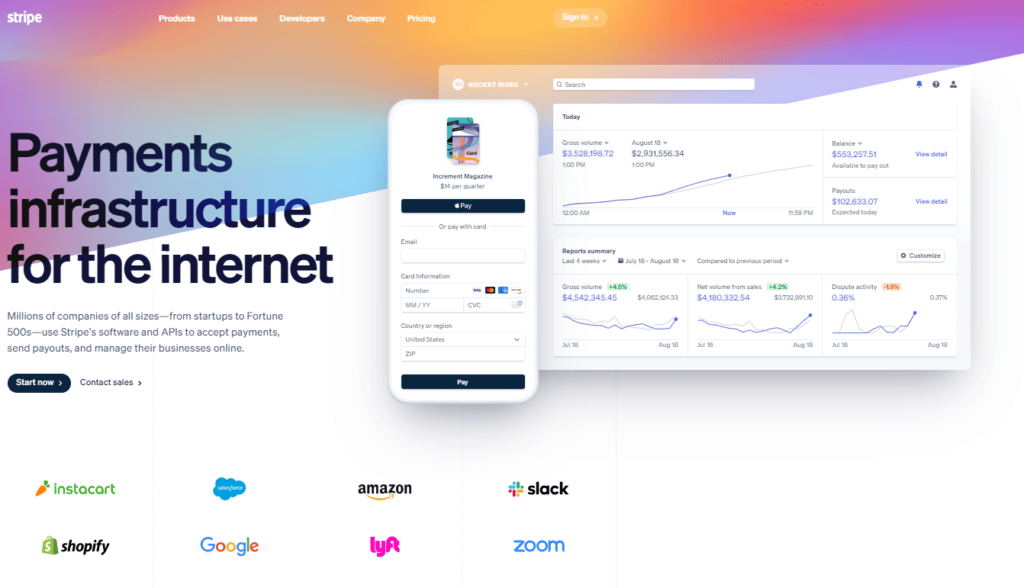
Before we go to the next example, please take a few seconds to subscribe to our newsletter so that you can stay updated with our new content and marketing funnels and conversion optimization.
Example 2: Uber
Look at the headline- it just says “Everyone’s Private Driver”
Well, with this vague headline and no sub-heading you’d have imagined the type of users Uber targeted with its home page back in 2011- those who were Completely Unaware.
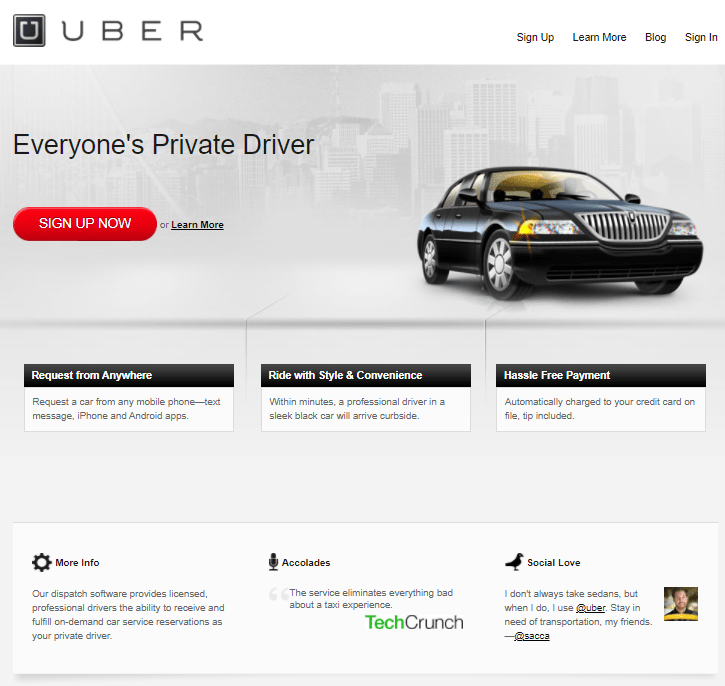
In 2011, people didn’t even know that ride-hailing is possible using an app where drivers are willing to work as chauffeurs. They were obviously not looking for drivers online.
But they had a problem- it wasn’t easy to hire a cab from anywhere at any time.
When we talk about customer awareness levels, these levels are separated by psychological barriers. On one extreme we have indifference and on the other end, we have extreme intent.
Uber was trying to address the indifferent customers in 2011 and at this stage product name, price, or even the solution means nothing to them. So unlike Stripe (which had a competitor in Paypal offering the solution in a different manner), Uber couldn’t talk about ease of ride-hailing.
They appealed to an inner desire- “Private Driver”. It was not to sell the product to an unaware customer. It was to capture their imagination and then gradually move to transition them to the actual problem.
The next step was to make people aware of that problem and there they talked about 3 things- request from anywhere, ride with style and convenience, and hassle-free payment.
They never mentioned the product anywhere in the above-fold section.
In 2013 ride-hailing gained some popularity and people knew about the problem. However, they still needed convincing. Uber was targeting a Problem Aware group.
Their home page had multiple slides speaking to different types of users with different problems. Below are the slides from 2013:
Notice that in 2013, they were talking about problems- yet no mention of the Uber brand or its features.

Ease

Affordability

Safety and convenience- it's even available at night

You can work while you travel. You are in charge.
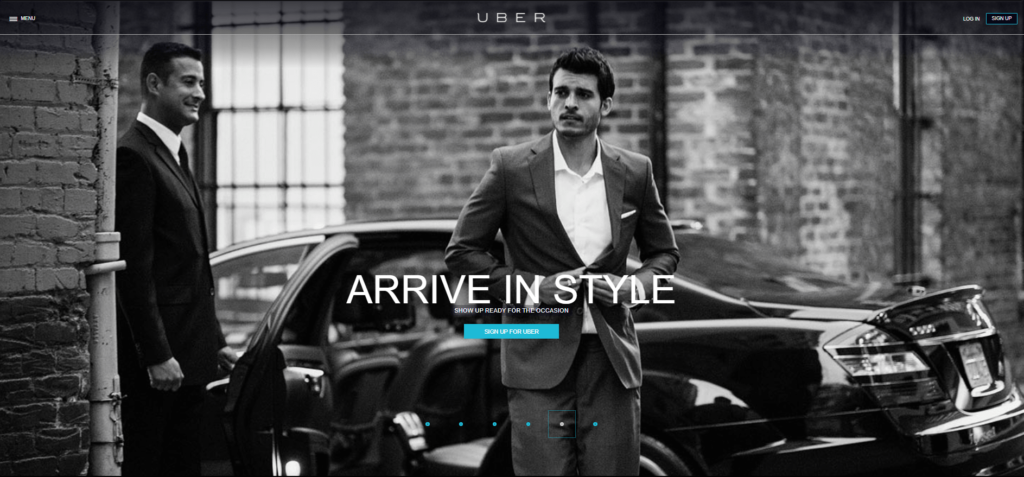
In 2011, it even offered a style that comes with a chauffeur-driven car

Uber can be used globally
There are 2 things to be noted here:
- Uber was targeting multiple needs on the same home page – A strategy that’s uncharacteristic of a great brand unless they are appealing to a diverse audience with different needs looking for different results from the same solution (like Uber) that needs to be communicated.
- The emphasis is still on the problems and not the brand or the solution
We are now in 2016 when Uber was addressing Solution Aware prospects.
Their home page talks about the solution- Get there using the app.
On the right side, they have a screenshot of their app where you can get started as a rider or driver. People are ready to use the solution- they just need a push.
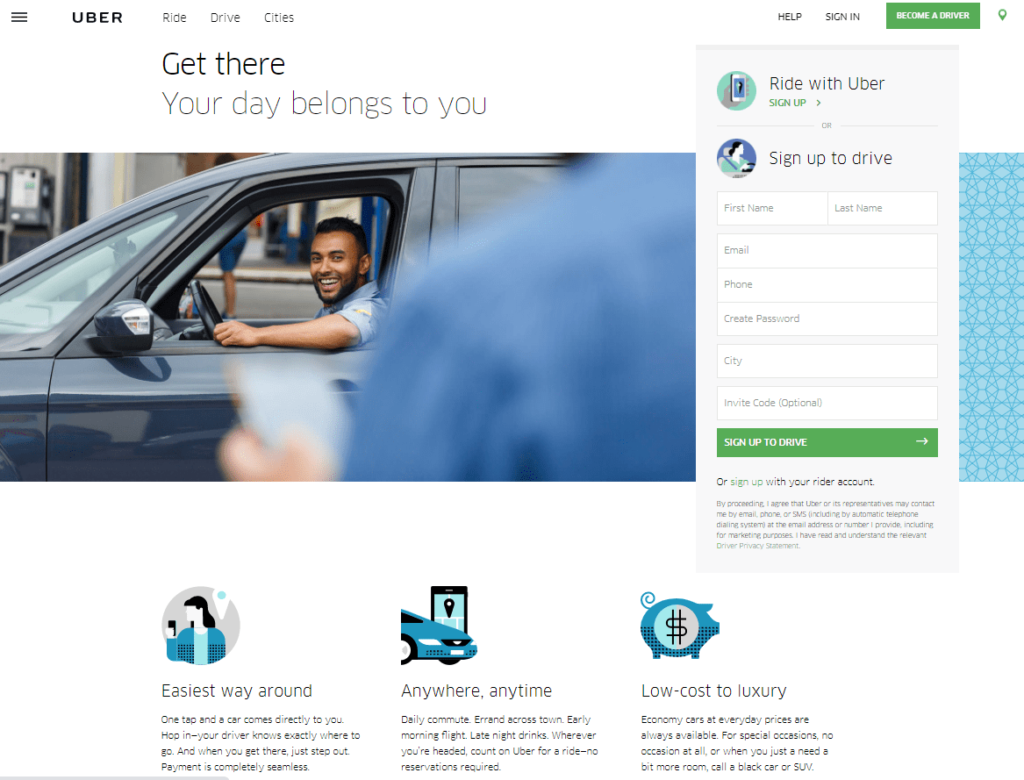
At this point, Uber was targeting Product Aware prospects.
People visiting their page knew what Uber was offering and how to use it. Uber just had to talk about 2 solutions- drivers and riders.
Registering as a driver or rider is one step ahead of knowing the solution. Uber knows at this point that most people visiting this page are aware of their solution and they are here to ride or drive. They are offering the two clear paths without wasting any time.

Finally, it’s 2021 and Uber is past the stage of product awareness for its ride-share solution. They are not even showing rides as a default solution on their home page. They know that people are already aware of their ride-related solutions.
They are targeting a new group of people looking for food delivery (it can be partly due to pandemic when users are less likely to use rides and more likely to order food).
They are targeting a Product Aware group who are either ready to order food through their app or partner with them as restaurants.
Their other solutions like rides, freight, bikes are also clearly visible on the top.


Subro Chakraborty
Founder of Marketing Metrics, an on-demand analytics service provider. I'll join your team as a marketer and focus on customer acquisition, lead identification, cold outreach, landing page design/optimization, copywriting, lead capture, email automation, social media campaigns, content planning, analytics setup, and SEO.
